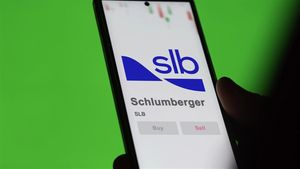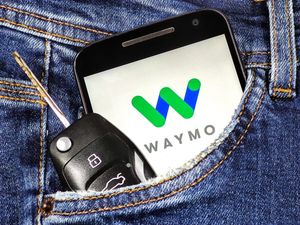
The highly anticipated future of humanoid robotics is rapidly unfolding, with Google-backed startup Apptronik emerging as a formidable challenger to Tesla (NASDAQ: TSLA) in the race to develop and deploy advanced human-like robots. As of September 26, 2025, the competition is heating up, marking a pivotal moment in the industry's transition from conceptual prototypes to real-world commercial applications. This rivalry is not merely a corporate battle but a significant indicator of accelerating advancements in artificial intelligence and mechanical engineering, promising to reshape industries and redefine the future of labor.
The immediate implication of Apptronik's aggressive push, particularly with its Apollo robot, is a heightened focus on practical, verifiable deployment in structured industrial environments. While Tesla (NASDAQ: TSLA)'s Optimus captures headlines with its ambitious long-term vision and integration of existing AI, Apptronik's strategic partnerships and early commercialization efforts are positioning it for a potential first-mover advantage in specific high-demand sectors, forcing the entire industry to prioritize tangible utility and immediate return on investment.
Detailed Coverage: A Sprint Towards Embodied AI
The journey of both Apptronik's Apollo and Tesla (NASDAQ: TSLA)'s Optimus has been marked by significant milestones, showcasing differing philosophies in the pursuit of humanoid robotics.
Apptronik, spun out of the University of Texas at Austin's Human Centered Robotics Lab in 2016, has steadily built its capabilities. After an initial funding round in 2018 and a partnership with NASA in 2022, the company officially unveiled its Apollo humanoid robot on August 23, 2023. Apollo, standing 173 cm tall and weighing 73 kg, was designed from the outset for industrial applications, capable of lifting 25 kg and operating on swappable four-hour battery packs. A crucial development occurred in March 2024, when Apptronik announced a commercial agreement with Mercedes-Benz (FWB: MBG) to pilot Apollo robots in its manufacturing facilities for logistics and inspection tasks, marking its first publicly announced commercial deployment. This was followed by a strategic partnership with Google DeepMind in December 2024 to enhance Apollo's AI capabilities. The company then secured a substantial $350 million Series A funding round in February 2025, with Google (NASDAQ: GOOGL) participating, which later expanded to $403 million by March 2025 with additional investors including ARK Invest (NYSEARCA: ARKK) and RyderVentures (NYSE: R). In February 2025, Apptronik also announced a pilot engagement with Jabil (NYSE: JBL) to manufacture Apollo robots and integrate them into operations, envisioning Apollo robots potentially building other Apollos. Most recently, on September 15, 2025, Apollo won Fast Company's 2025 Innovation by Design Award.
Tesla (NASDAQ: TSLA)'s foray into humanoid robotics began with the announcement of the Tesla Bot (later Optimus) at its AI Day on August 19, 2021, with Elon Musk envisioning a robot that could perform dangerous or repetitive tasks. A semi-functional prototype, "Bumblebee," was displayed walking at the second AI Day on September 30, 2022, with Musk projecting a sub-$20,000 price point and production readiness by 2023. Subsequent updates included Optimus performing sorting tasks in September 2023 and the reveal of Optimus Gen 2 in December 2023, boasting improved dexterity and speed. By May 2024, videos showed Optimus working in a Tesla (NASDAQ: TSLA) factory. However, Tesla (NASDAQ: TSLA)'s journey has also seen revisions to its aggressive timelines. While Musk indicated limited production in 2025 for internal use and external sales by 2026, reports on July 4, 2025, indicated a halt in Optimus production plans due to "unresolved hardware challenges" like overheating and battery endurance, after approximately 1,000 units were reportedly assembled. Despite these setbacks, Musk stated on July 24, 2025, that Optimus 3 prototypes are expected by the end of 2025, with full-scale production slated for early 2026. A significant development occurred on September 17, 2025, with a reported $10 billion order for up to 10,000 Optimus 3+ robots from PharmAGRI for pharmaceutical manufacturing and farm operations. Just today, September 26, 2025, news of a lawsuit regarding a robot injury at Tesla (NASDAQ: TSLA) surfaced, adding another layer of complexity to the narrative surrounding worker safety and automation.
Initial market reactions reflect these differing trajectories. Apptronik has garnered strong investor confidence, evidenced by its significant funding rounds and strategic partnerships, particularly with industrial giants, validating its practical approach. Tesla (NASDAQ: TSLA)'s Optimus, while generating immense hype due to Elon Musk's ambitious visions, faces more scrutiny regarding its autonomous capabilities, production timelines, and transparency, though large orders like that from PharmAGRI signal continued belief in its long-term potential.
Corporate Impact: Winners, Losers, and Strategic Shifts
The intensifying humanoid robotics race is poised to create distinct winners and losers, fundamentally altering the strategic landscape for Apptronik (NYSE: APTR), Tesla (NASDAQ: TSLA), and other players in the burgeoning market.
Apptronik (NYSE: APTR) stands to gain significantly from its strategy of focused commercialization and robust partnerships. By prioritizing immediate deployment in industrial and logistics sectors, it aims to capture crucial early market share and address pressing labor shortages. The substantial $403 million Series A funding, with participation from Google (NASDAQ: GOOGL) and Mercedes-Benz (FWB: MBG), underscores strong investor confidence, valuing the company at an implied $3.9 billion as of September 2025. These partnerships provide vital validation and pathways for real-world application and scalability. Apollo's human-centered design, higher payload capacity, and swappable battery system offer practical advantages for industrial use. However, its initial niche focus might limit its perceived scope compared to Tesla (NASDAQ: TSLA)'s broader "general-purpose" vision, potentially hindering its reach into diverse consumer markets in the long term if it doesn't strategically expand.
Tesla (NASDAQ: TSLA), with Optimus, is pursuing an ambitious, long-term vision, with Elon Musk projecting the robot could account for 80% of Tesla (NASDAQ: TSLA)'s overall value. If Tesla (NASDAQ: TSLA) can achieve its aggressive production targets and its projected low price point of $20,000-$30,000, it could dramatically disrupt the market, making humanoid robots accessible to a much wider audience. Tesla (NASDAQ: TSLA)'s existing AI advancements from its Full Self-Driving (FSD) technology and its vertical integration strategy provide potential cost advantages and proven manufacturing scalability. The reported $10 billion order from PharmAGRI suggests significant potential for large-scale industrial deployment. However, Tesla (NASDAQ: TSLA) faces considerable risks, including production delays, execution challenges, and skepticism regarding Optimus's autonomous capabilities beyond scripted demonstrations. The recent production halt and hardware issues highlight the complexities of scaling such advanced robotics.
The ripple effects will extend to other key players like Figure AI (Private), Agility Robotics (Private), Boston Dynamics (Private), and Sanctuary AI (Private). The heightened competition will accelerate R&D across the board, pushing companies to innovate faster in AI, dexterous manipulation, and energy efficiency. It will also likely lead to more strategic partnerships for technology sharing and market access, as exemplified by Apptronik's collaborations. If Tesla (NASDAQ: TSLA)'s low price point is realized, it will exert immense pressure on competitors to reduce costs, potentially leading to market consolidation or increased specialization. Companies focused on core components like actuators, sensors, and AI chips, such as NVIDIA (NASDAQ: NVDA), stand to benefit from the increased demand, but geopolitical factors, like rare-earth magnet restrictions, could pose supply chain challenges.
Wider Significance: A New Era of Physical AI
The Apptronik-Tesla rivalry transcends corporate competition; it is a microcosm of a profound societal and technological transformation, signaling a new era of "physical AI" and embodied intelligence.
This race squarely aligns with several overarching industry trends. Firstly, it underscores the explosive market growth projected for humanoid robotics, with some forecasts reaching into the trillions of dollars by mid-century, driven by unprecedented advancements in AI and machine learning. Secondly, it highlights the deep integration of AI, where sophisticated algorithms are essential for enabling robots to perceive, interact, and learn with increasing autonomy. Apptronik's collaboration with Google DeepMind and Tesla (NASDAQ: TSLA)'s leverage of its FSD AI are prime examples. Thirdly, the competition is a direct response to global labor shortages and aging populations, positioning humanoids as a versatile solution for tasks across manufacturing, logistics, healthcare, and even personal assistance. Finally, it showcases differing development philosophies: Apptronik's human-centered, modular design focused on immediate commercialization versus Tesla (NASDAQ: TSLA)'s vertically integrated, mass-production approach driven by a broad, general-purpose vision.
The ripple effects on competitors and partners are already evident. The intense pressure is accelerating innovation among peers like Figure AI (Private) (backed by OpenAI (Private) and NVIDIA (NASDAQ: NVDA)), Agility Robotics (Private) (partnered with Amazon (NASDAQ: AMZN)), and Sanctuary AI (Private). This necessitates faster R&D, greater cost efficiency, and the formation of strategic alliances for shared expertise and market access. The anticipated mass production will also spur the growth of a specialized supply chain for AI hardware, sensors, and components.
However, the widespread deployment of humanoid robots also introduces complex regulatory and policy implications. Concerns about job displacement and economic inequality are paramount, requiring policymakers to consider retraining programs and new economic models. Ethical considerations, including the potential for misuse, privacy, and data security, demand robust frameworks. Establishing clear safety standards and determining liability in cases of robot error are novel legal challenges. Furthermore, the strategic importance of this technology is prompting calls for national robotics strategies, akin to the Space Race, to ensure global competitiveness. The European Union's comprehensive AI Regulation (Regulation (EU) 2024/1689) provides an early model for such governance. Historically, this mirrors the societal shifts brought by the Industrial Revolution and the early days of industrial automation, where fears of job loss were balanced against gains in productivity. The current race also echoes the self-driving car competition, particularly Tesla (NASDAQ: TSLA)'s iterative, AI-driven development approach.
What Comes Next: Navigating a Transformative Future
The future of humanoid robotics, shaped by the intense rivalry between Apptronik and Tesla (NASDAQ: TSLA), promises a transformative journey with both short-term pragmatism and long-term ambition.
In the short term (next 1-5 years), humanoid robots will primarily integrate into structured industrial environments. Factories, warehouses, and logistics centers will be the initial proving grounds, where tasks like material handling, assembly, and inspection will be automated. Apptronik's deployments with Mercedes-Benz (FWB: MBG) and GXO Logistics (NYSE: GXO) exemplify this focused approach, addressing critical labor shortages in these sectors. Pilot programs will gradually integrate humanoids alongside human workers, focusing on specific workflows that offer clear commercial value. Cost reduction will be a significant driver, with 2025 seen as a pivotal year for transitioning from prototypes to scaled implementation.
Looking long term (5-15+ years), the vision expands dramatically. Widespread industrial adoption is expected to pave the way for a significant ramp-up in consumer shipments by the early 2030s, as costs decrease. Humanoids are envisioned for diverse applications, including elder care, household chores, public space maintenance, and retail services. This widespread integration aims to solve global labor shortages and enhance productivity, with some projections suggesting billions of humanoids could operate globally by 2040. The ultimate goal is embodied AI with advanced intelligence that can learn, adapt, and autonomously perform complex tasks, moving towards artificial general intelligence (AGI).
Both Apptronik and Tesla (NASDAQ: TSLA) will need to consider strategic pivots. Apptronik (NYSE: APTR), while strong in industrial deployment, might need to accelerate its push into direct-to-consumer or specialized service markets if costs fall faster than anticipated. Deepening its Robotics-as-a-Service (RaaS) offerings will also be crucial for broader adoption. Tesla (NASDAQ: TSLA), on the other hand, must prioritize demonstrating Optimus's autonomous capabilities in diverse, unstructured real-world scenarios to validate its ambitious claims and counter perceptions of scripted demonstrations. If its vision-only AI strategy faces limitations in physical interaction, a pivot to hybrid learning methods with varied sensor inputs might be necessary.
Emerging market opportunities include addressing persistent labor shortages, boosting productivity, and creating entirely new service industries around robot installation, maintenance, and personalized AI. The demand will also fuel growth in the component supply chain for high-performance chips, sensors, and actuators. However, significant challenges remain, including technical hurdles in locomotion, dexterous manipulation, energy efficiency, and robust control systems. High costs, scalability issues, and the complexities of human-robot interaction, along with the need for clear regulatory and ethical guidelines, will continue to be critical barriers to widespread adoption.
Potential scenarios range from "Industrial First, Gradual Expansion," where humanoids slowly integrate into factories and warehouses before expanding, to a "Rapid Consumer Breakthrough" driven by unforeseen AI advancements and dramatic cost reductions. A "Fragmented and Niche Dominance" scenario is also possible if technical hurdles persist, leading to specialized robots rather than general-purpose ones. Finally, a "Geopolitical Race" could see countries heavily investing in domestic companies, creating distinct technological ecosystems.
Wrap-up: A Transformative Market in Motion
The humanoid robotics race, spearheaded by the dynamic competition between Google-backed Apptronik and Tesla (NASDAQ: TSLA)'s Optimus, represents a frontier of technological innovation with profound implications for the global economy and society. The key takeaway is the industry's rapid acceleration from theoretical concepts to tangible, real-world applications, albeit with differing speeds and strategies. Apptronik's pragmatic focus on immediate commercial deployment in industrial settings, bolstered by strategic partnerships and significant funding, positions it for early market penetration. In contrast, Tesla (NASDAQ: TSLA)'s ambitious, vertically integrated vision for a general-purpose, mass-market robot, while facing developmental hurdles, promises a potentially disruptive long-term impact on scale and affordability.
Moving forward, the market is set for exponential growth, driven by advanced AI, the pressing need to address labor shortages, and the versatility of human-like robots in existing human-centric environments. While initial applications will concentrate on controlled industrial tasks, the long-term trajectory points towards widespread integration into service sectors, healthcare, and eventually, domestic life. This transformation will not merely replace human labor but redefine work, creating new job categories and fostering an era of increased productivity and potential abundance. However, navigating the ethical implications, ensuring safety, and establishing robust regulatory frameworks will be paramount to realizing this future responsibly.
Investors should closely monitor several critical indicators in the coming months. Look for concrete announcements of successful commercial deployments and expanded partnerships, which validate a robot's utility and market fit. Progress in cost reduction and manufacturing scalability will be crucial, as lower prices will unlock broader market adoption. Keep an eye on breakthroughs in AI, particularly in autonomous decision-making, dexterous manipulation, and real-time environmental adaptation, which are essential for versatile robots. Advancements in battery technology and efficient power management will also be vital for extended operational times. Furthermore, track regulatory developments and the establishment of safety standards, as these will significantly influence market access and public acceptance. Finally, observe significant funding rounds and market valuations, as these can signal emerging leaders and strong investor confidence in this transformative sector. For diversified exposure, thematic ETFs focused on robotics and AI, such as the KraneShares Humanoid and Embodied Intelligence Index ETF (KOID), Global X Robotics & Artificial Intelligence ETF (BOTZ), and ARK Autonomous Technology & Robotics ETF (ARKQ), offer potential avenues.
This content is intended for informational purposes only and is not financial advice.







